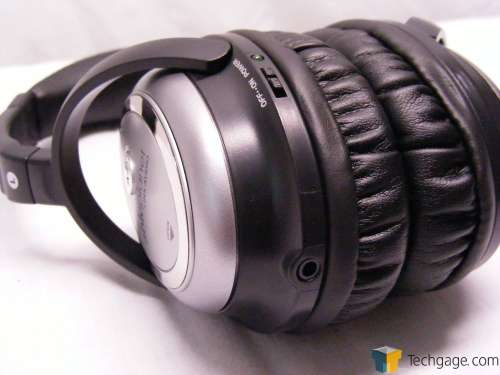- Qualcomm Launches Snapdragon 4 Gen 2 Mobile Platform
- AMD Launches Ryzen PRO 7000 Series Mobile & Desktop Platform
- Intel Launches Sleek Single-Slot Arc Pro A60 Workstation Graphics Card
- NVIDIA Announces Latest Ada Lovelace Additions: GeForce RTX 4060 Ti & RTX 4060
- Maxon Redshift With AMD Radeon GPU Rendering Support Now Available
AblePlanet Clear Harmony Headphones

When we met AblePlanet at CES, their Clear Harmony noise canceling headphones really caught our attention. Their built-in noise canceling circuitry is intended to reduce the infiltration of ambient noise, but can they stack up sonically against some serious competition within their price bracket?
Page 3 – Features Overview
AblePlanet’s Clear Harmony NC1000CH headphones blend a variety of traditional headphone, noise-canceling, and sonic enhancement technologies to improve upon the experience provided by traditional consumer headphones. Here’s an in-depth look at the features.
The AblePlanet Clear Harmony NC1000CH headphones feature a circumaural design, which simply means that they enclose the ear completely within the earcup, instead of sitting directly on it, or lodging inside the ear canal. Each earcup seals against your head with a soft, leather-wrapped pad, with a third leather-wrapped pad at the top of the headband. The headband features adjustable-length extensions, to accommodate a wide range of head sizes.
The processing circuitry and self-amplification for the Clear Harmony NC1000CH headphones is located in the left earcup, as indicated by the presence of a battery door. The Clear Harmony NC1000CH headphones take two ‘AAA’ batteries, and provide 30mW of self-amplification, in addition to the built-in noise-cancellation and “LINX AUDIO” processing.
The Clear Harmony range of headphones features AblePlanet’s proprietary “LINX AUDIO” processing, which generates higher-frequency harmonics throughout the frequency spectrum. Using higher harmonics to augment the bass range is a common tactic, but LINX AUDIO processing adds these harmonics to all frequencies, to create a richer and more “lively” sound.
On their web site, AblePlanet trumpets CES “Innovations” awards for LINX AUDIO products for three years running. Originally developed for the company’s range of assistive-listening products, the company is now applying LINX AUDIO technology to audio products of all types, including the Clear Harmony range of headphones.
One thing to note, however, is that ordinary loudspeakers also have a habit of adding their own upper harmonics when being driven to distorted levels, so the effect of adding these harmonics purposefully is essentially like replicating the effects of loudspeaker distortion, something that’s difficult to justify if high fidelity to the original signal is the goal.
Still, added distortion products can have the effect of greater apparent loudness, without actually increasing output levels. I’ll comment later on how well LINX audio works, in the ‘listening testing’ portion of the article.
The Clear Harmony NC1000CH headphones also feature microphones in each earcup that are part of the headphones’ active noise canceling system. This system picks up incident noise, and produces an inverse correction signal, which is then sent to the corresponding driver in the headphones, left or right. The result is that the overall level of infiltrating noise perceived by your ears is greatly reduced. Again, I’ll comment more on how well this feature performs in the ‘testing’ portion of the article.
|
|
Support our efforts! With ad revenue at an all-time low for written websites, we're relying more than ever on reader support to help us continue putting so much effort into this type of content. You can support us by becoming a Patron, or by using our Amazon shopping affiliate links listed through our articles. Thanks for your support!








